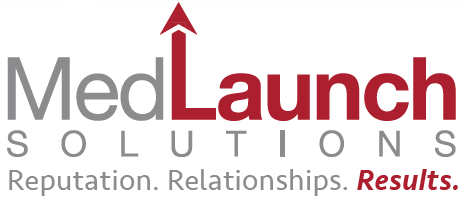1. Welcome new providers to the area
Being aware of new physicians in your area and making an effort to reach out to them with a welcome letter or call is important. Share a little about yourself and your practice and provide your contact info. Make a personal connection by offering to help introduce them to other physicians in the community or to be a resource for questions about schools, daycares, family needs, etc. if appropriate.
2. Make face-to-face meetings with referrers a priority
I have seen firsthand what a face-to-face meeting with a potential referral source can mean for a specialist. It’s so rare for a physician to take time out of their busy day to stop by to meet a potential referrer face-to-face…so when it DOES happen, physicians and office staff are shocked and appreciative. Use a physician liaison to plan a few hours to visit top referrers or potential referrers and have him/her facilitate these visits and attend with you to forge relationships that have potentially already been initiated with providers and staff. Hand deliver an afternoon snack or a Christmas basket. 2 or 3 hours blocked out of your schedule every now and then to make visits like this will pay off tremendously.
3. Follow up with the referrer
Timely follow-up on patients sent is essential. Send emails or make calls yourself to inform referrers about your visit with their patient. Adding the personal touch shows referrers that you truly care about their patients. After you follow up, send a personal, handwritten note. Using a physician liaison can help with the time commitment that this task takes – have them write the notes to referrers and then you sign them before they are sent.
Referrers want to partner with providers that make things easy for them and their staff, are committed to excellent patient care and appreciate the referrals. Scheduling time each week for these tasks will help in building a robust referral network.
4. Simplify the referral process
Making referrals to your practice EASY is essential. Use a physician liaison to let referrers’ staff know that they are there to help them make the process simple. Consider posting a user-friendly patient referral form on your website for physicians and other referral sources to access, fill out and submit to your practice. Or create pads of referral forms to have a physician liaison hand deliver to referral practices and explain to the person that makes the referral decisions that these forms are simply for their convenience and they may use them if it makes their life easier…but that they aren’t required. A physician liaison can find out how each practice prefers to refer and get them whatever resources are beneficial for them. The key is convenience. Be the specialist that is dedicated to making things EASY on referrers and their staff.
5. Educate referrers on your specialty areas
Be clear and concise about who you are, what you do and how you can help their patients. Create a marketing piece that details this information and make sure each nurse’s station, provider, etc. has plenty of these pieces along with a stack of your business cards. A physician liaison for your practice can educate providers and staff on what you are best at and the type of patients you can help with.
6. Make friends with the office staff
The office support staff, receptionist, Practice Manager, Referral Coordinator, nurse or medical assistant may actually do more of the referring than the provider. Finding out WHO makes the referral decisions is often half the battle. A physician liaison can be your investigator in finding out who the right person to cultivate a relationship with is, and then build rapport and trust with that person.


